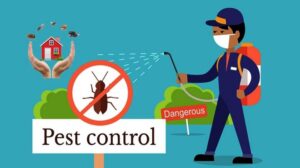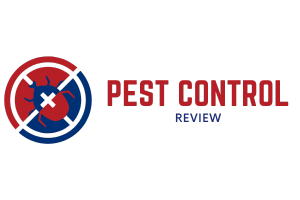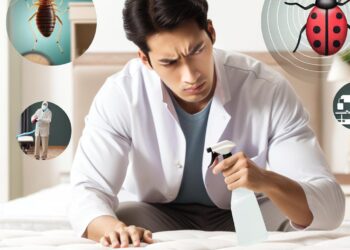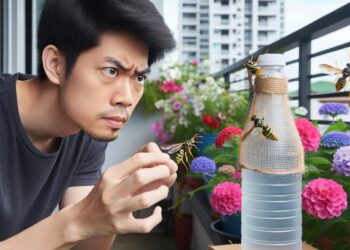The Impact of Global Travel on the Spread of Pests
Global travel has become increasingly accessible and affordable over the past few decades, allowing people to visit different parts of the world and experience new cultures. While this has undoubtedly been beneficial for many, it has also had a significant impact on the spread of pests. The movement of people and goods across borders has led to the introduction of new pests to regions where they previously did not exist, and the spread of existing pests to new areas. In this article, we will explore the impact of global travel on the spread of pests, and what can be done to mitigate its effects.
What are Pests?
Pests are organisms that are harmful to humans, animals, or crops. They can be insects, rodents, plants, fungi, or bacteria, and they can cause damage to property, spread diseases, and negatively impact the environment. Pests are classified as invasive species when they are introduced to a new region or ecosystem, and they can cause significant damage to the local environment.

How Global Travel Affects the Spread of Pests
Global travel has a significant impact on the spread of pests, as it provides an easy way for organisms to move from one place to another. Pests can hitch a ride on goods, luggage, or even clothing, and once they reach a new location, they can establish themselves and cause havoc. The following are some of the ways in which global travel affects the spread of pests:
- Introduction of new pests to new areas: When people travel to new places, they can inadvertently bring with them pests that are not native to that region. For example, the emerald ash borer, a beetle native to Asia, was introduced to North America through the transport of wooden packing materials. The beetle has since caused significant damage to ash trees in the region, leading to the destruction of millions of trees.
- Spread of existing pests to new areas: Global travel also provides a way for existing pests to spread to new areas. For example, the brown marmorated stink bug, a pest native to Asia, was first detected in the United States in the late 1990s. It is believed that the stink bug was introduced to the US through the transport of goods from Asia. Since then, the stink bug has spread to many parts of the US and has become a significant agricultural pest.
- Increased pest pressure on existing populations: Global travel can also lead to an increase in pest pressure on existing populations. When pests are introduced to a new area, they often do not have natural predators or competitors, which allows them to reproduce and spread quickly. This can lead to a significant increase in pest populations and cause damage to the local environment.
What Can be Done to Mitigate the Effects of Global Travel on the Spread of Pests?
The spread of pests through global travel is a significant challenge, and there is no simple solution. However, there are several measures that can be taken to mitigate the effects of global travel on the spread of pests:
- Education: Education is key to raising awareness about the risks of introducing pests to new areas. Travelers should be educated about the importance of not transporting live plants or animals, and the risks associated with bringing in non-native species. Similarly, the general public should be made aware of the importance of reporting sightings of pests to local authorities.
- Inspection and quarantine: Inspection and quarantine measures can be put in place to prevent the transport of pests across borders. For example, countries can require that all goods entering the country be inspected for pests and that they meet certain standards. Similarly, travelers can be required to declare any live plants or animals they are carrying, which can be inspected and either allowed in or confiscated.
- Biological control: Biological control involves the use of natural enemies of pests to control their populations. This method can be effective in managing invasive species, but it must be carefully planned and executed to avoid unintended consequences. Biological control can be particularly useful in situations where chemical control is not practical or desirable.
- Integrated pest management (IPM): Integrated pest management is a holistic approach to pest management that combines several methods to reduce pest populations. IPM involves using a combination of biological, cultural, and chemical control methods to manage pests in a sustainable and environmentally friendly way.
- Research and monitoring: Research and monitoring are essential for understanding the spread of pests and developing effective management strategies. Researchers can study the behavior’s and ecology of pests to develop better methods for controlling them. Monitoring can help detect new pest infestations early, allowing for a rapid response to prevent further spread.

In addition to the measures discussed above, international cooperation is also crucial in addressing the problem of pest spread through global travel. Countries must work together to share information and resources to prevent the introduction and spread of pests. The International Plant Protection Convention (IPPC),a treaty adopted by the United Nations, aims to prevent the spread of pests and promote plant health. The IPPC provides a framework for countries to cooperate in the prevention and control of pests and supports the development of international standards for plant health.
The impact of global travel on the spread of pests is a significant challenge that requires a multifaceted approach. While it is not possible to eliminate the risks entirely, steps can be taken to mitigate the effects and reduce the spread of pests. Education, inspection and quarantine, biological control, IPM, research and monitoring, and international cooperation are all essential tools in managing pest populations and preventing the introduction and spread of invasive species. By working together, we can minimize the impact of pests on the environment, agriculture, and human health.

Conclusion
Global travel has had a significant impact on the spread of pests, but it is not the only factor contributing to this problem. Climate change, increased trade, and other human activities have also played a role in the spread of pests. However, global travel remains an important factor, and it is essential to take steps to mitigate its effects. Education, inspection and quarantine, biological control, IPM, and research and monitoring are all important tools in managing pest populations and reducing the risk of new introductions. By working together, we can minimize the impact of pests on the environment, agriculture, and human health.
















